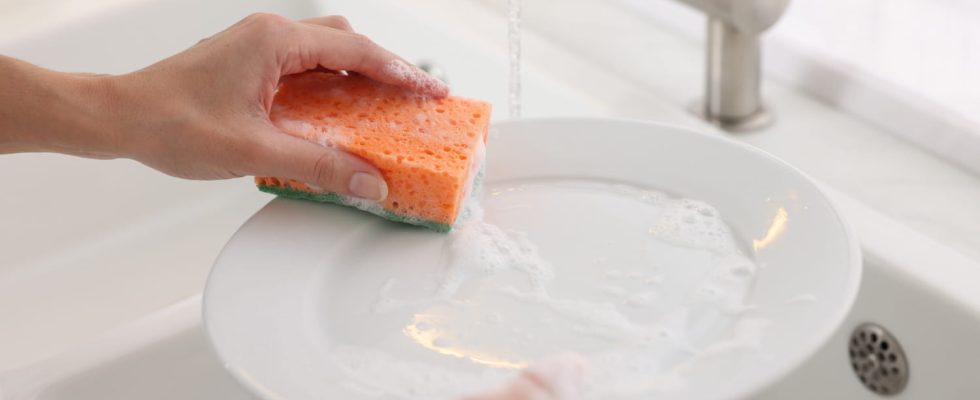A study reveals the dark secrets of kitchen sponges. They would be infested with bacteria. But good news, there are other solutions…
Bacteria quickly invaded our interiors. We already knew it, but it never hurts to remember it… especially when a new study shows quite frightening results on an everyday object. Scientists from the Norwegian Food Research Institute Nofima have compared the pathogens present on objects present in large numbers in our kitchens: sponges, dish brushes and other dishcloths.
Alert: “A single sponge can harbor more bacteria than the world’s population,” said researcher Trond Møretrø, researcher at Nofima, a Norwegian food research institute, co-author of a new study published online in the Journal of Applied Microbiology. If many of these bacteria are not dangerous to health, some of them are more to be scrutinized, in particular salmonella. However, “salmonella and other bacteria develop and survive better in sponges than in brushes, because the sponges used daily never dry”, warns this same researcher, interviewed by CNN.
An alternative exists and it is already used by our neighbors
To verify this, the researchers analyzed and compared the results on a European sample, in Norway, Denmark but also in Portugal. Verdict: no pathogenic bacteria (phew!) but a much higher concentration of bacteria in kitchen sponges than in brushes, which are used more in Nordic countries. And if salmonellae are added artificially in the laboratory, these decrease significantly after a few hours on a brush that has dried than in a sponge that remains damp.
The humidity of the sponge but also the food residues that remain there even after cleaning are thus a perfect breeding ground for bacteria which develop there very quickly. And if you thought you could escape it through thorough cleaning, you are on the wrong track. The researchers themselves were surprised to see that the frequency of cleaning or even the method of cleaning the sponges made no difference! The only viable solution would be to replace your kitchen sponge daily. Not very practical, even less economical or ecological…
Fortunately, a more hygienic and effective alternative presents itself: dish brushes, already adopted mainly in Denmark or Norway, much more than here where the famous green and yellow sponge is part of the panoply of the followers (or punished) of dives her at home. To maintain a clean and healthy kitchen, it is therefore recommended to let the dish brushes dry after use. Another advantage, the brushes have a wooden handle. The hand is therefore less in contact with humidity and possible bacteria. By adopting dish brushes, you say goodbye to unsanitary sponges and promote optimal hygiene in your kitchen…
